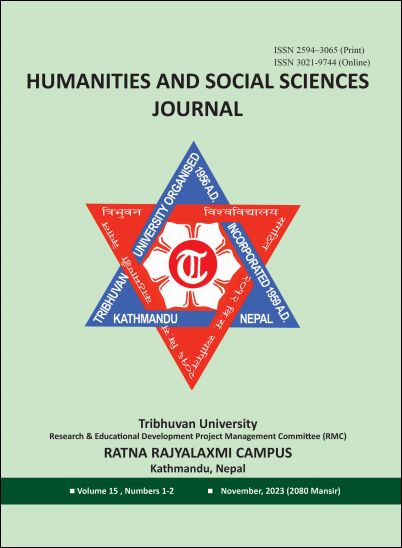Transculturation in Elizabeth Enslin's While the Gods Were Sleeping: Complexities and Connections
DOI:
https://doi.org/10.3126/hssj.v15i1-2.63737Keywords:
cultural constrictions and connections, Transculturation, contact zoneAbstract
This paper analyzes Elizabeth Enslin’s While the Gods Were Sleeping (2014) from the perspective of transculturation focusing on what transcultural constrictions the author experiences and how she thrashes those constrictions thereby developing transcultural connections. The author, an American PhD scholar in anthropology, falls in love to a Nepali man of a Brahman family with whom she travels a long way to Nepal for the field research for her PhD study. After marriage in a high caste Hindu family, she encounters heaps of cultural differences between her Christian culture and her family’s Hindu culture. From the very first greeting by the family to the attitudes towards marriage, pregnancy, menstruation, childbirth, caste and gender, she finds innumerable divergences from her culture. Accustomed to the Christian culture, she faces big challenges to adjust with the Hindu family and the society. However, she ultimately subdues the prevailing transcultural constrictions and builds transformational connections. The study argues that this has been possible due to the author’s anthropological knowledge that poignantly motivates her to interact with the host culture by actively involving in the transculturation process. For the analytical purpose, the study applies research concepts from cultural studies particularly focusing on the concept of transculturation as defined by the scholars Mary Louis Pratt and Wolfgang Welsch and others. Finally, the study expects to open a new avenue for the analysis of cultures in the contact zone.




